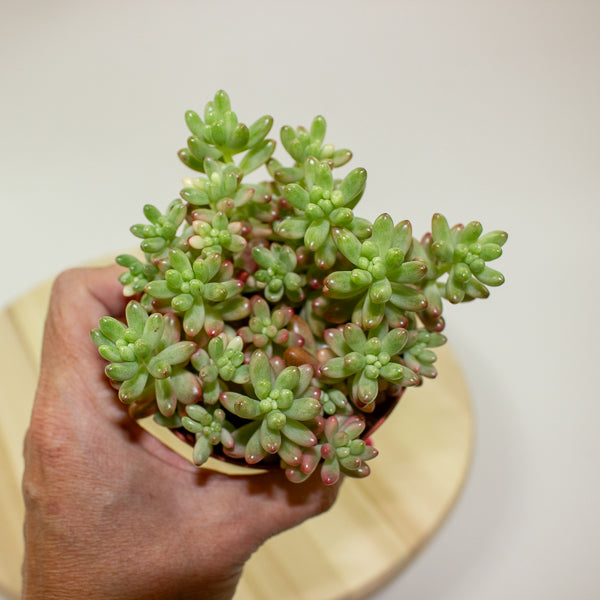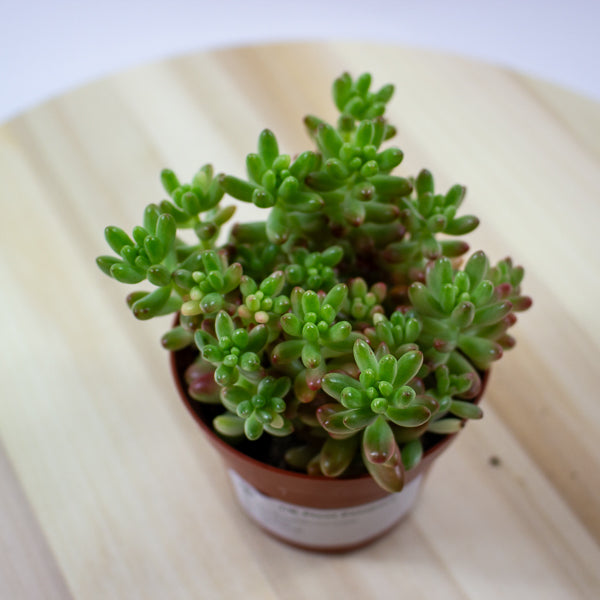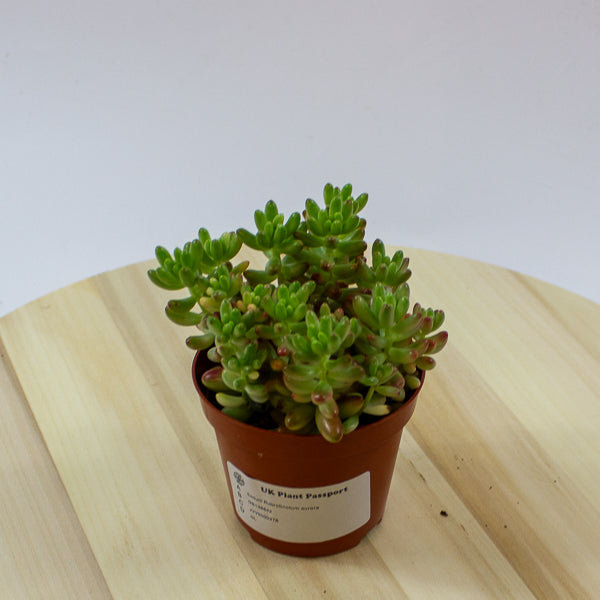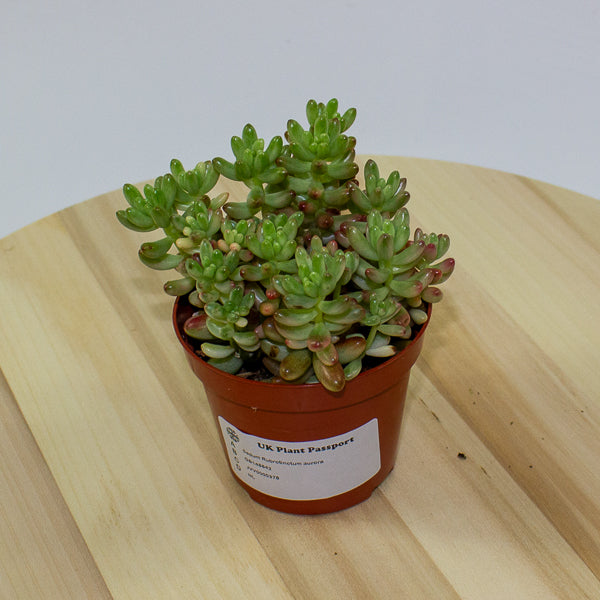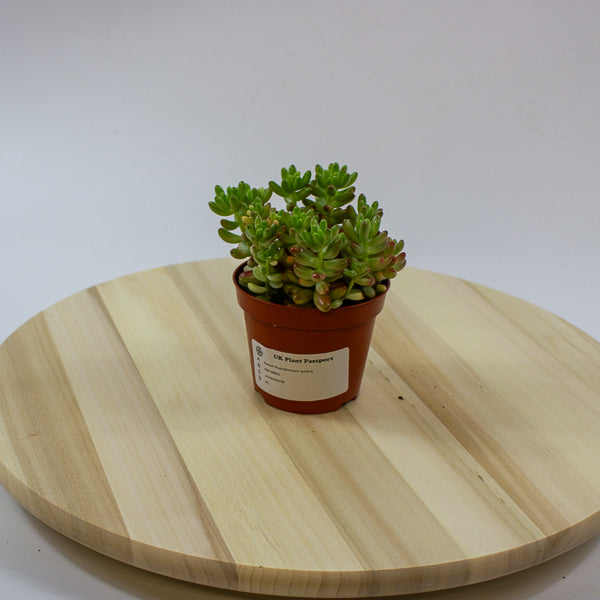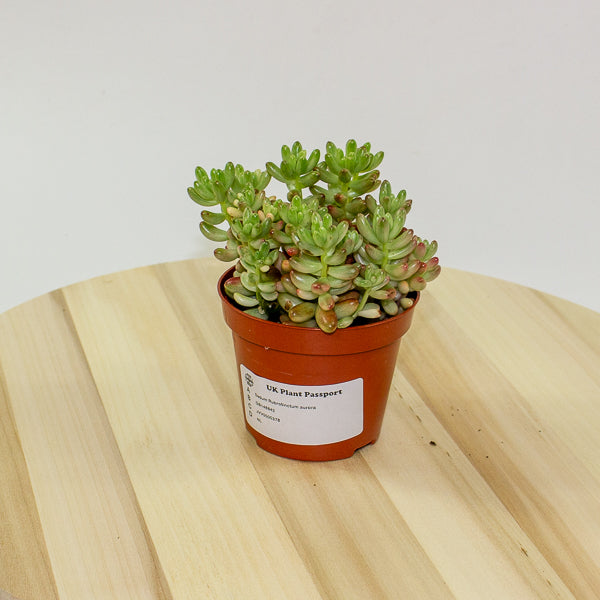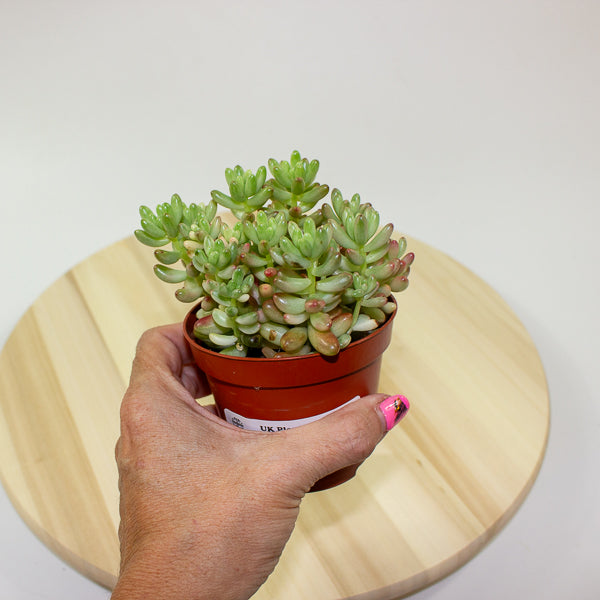1
/
of
8
Emm's Plant House
Sedum Rubrotinctum aurora 8.5cm H12cm
Sedum Rubrotinctum aurora 8.5cm H12cm
Regular price
£7.00 GBP
Regular price
Sale price
£7.00 GBP
Unit price
/
per
Taxes included.
Couldn't load pickup availability
Sedum rubrotinctum 'Aurora', commonly known as the 'Aurora Jelly Bean Plant,' is a charming succulent variety that features plump, jelly bean-shaped leaves with a beautiful mix of soft green and pastel pink hues. Native to Mexico, this low-maintenance plant is known for its attractive, colorful foliage that intensifies in bright light. It is a perfect addition to rock gardens, containers, or hanging baskets, offering a unique color palette and texture that makes it a popular choice for succulent collectors.
- Full Botanical Name: Sedum rubrotinctum 'Aurora'
- Common Names: Aurora Jelly Bean, Jelly Bean Plant
- Country and/or Region of Origin: Native to Mexico
- Growing Conditions in Native Habitat: Grows in dry, rocky regions with well-draining soil, thriving in areas with minimal rainfall and warm temperatures.
Care Guide
Care Guide
Share
